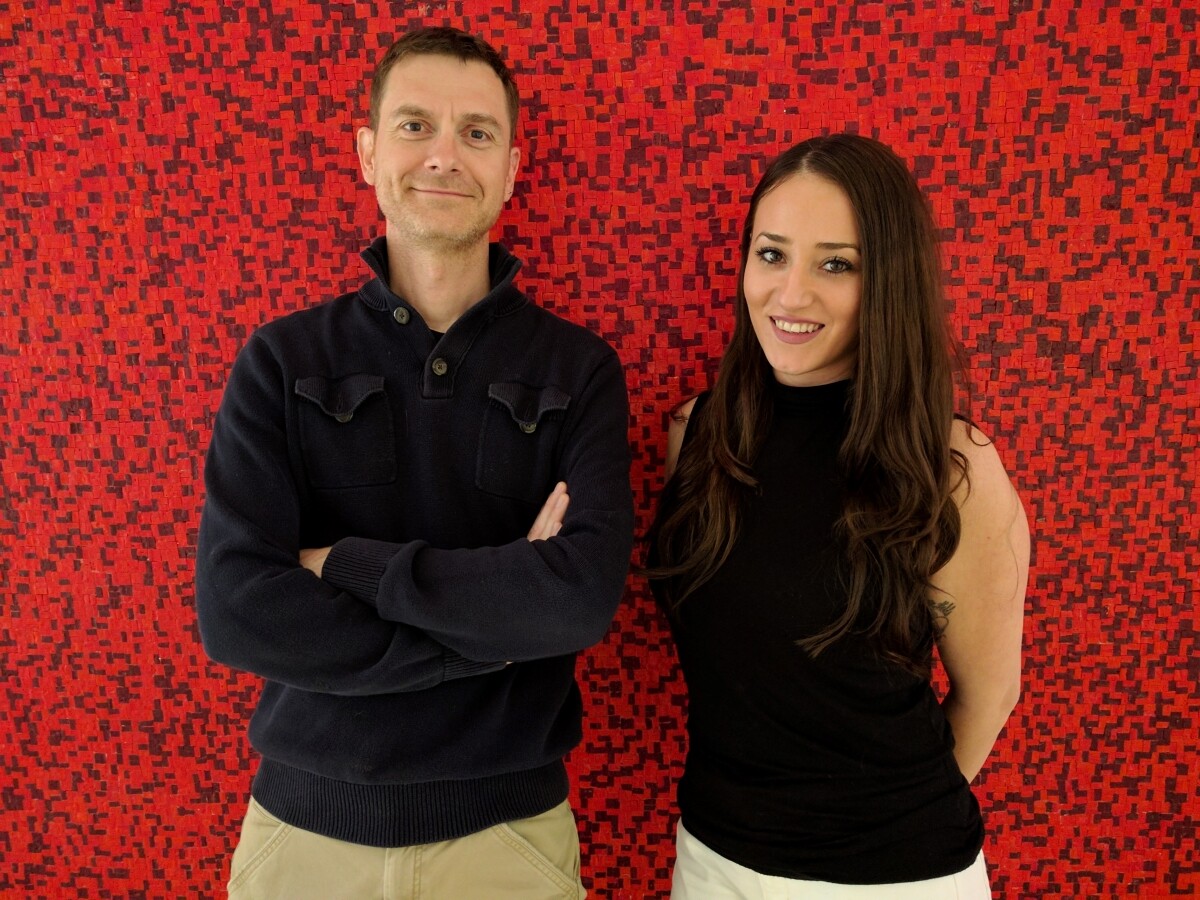Mobile Menu
- Education
- Research
-
Students
- High School Outreach
- Undergraduate & Beyond: Community of Support
- Current Students
- Faculty & Staff
- Alumni
- News & Events
- Giving
- About

As far back as she can remember, Ursula Nosi liked to figure things out. Why is the call of one bird different from another? How do the body’s organ systems function together? Why do some peppers rattle when shaken? (Seeds, it turns out — just don’t rub your eyes after touching them.)
Today, Nosi is still asking questions. She’s a fifth-year doctoral student in the lab of Brian Cox, a professor in the Department of Physiology at the University of Toronto, where she studies how cell fate decisions are made shortly after fertilization and how they give rise to the placenta.
(About ten per cent of pregnant women are affected by diseases of the placenta, with preeclampsia and intra-uterine growth restriction being the most common; the only treatment for these conditions is early delivery.)
Using genetically engineered embryonic stem cells and mouse embryos, Nosi and her colleagues recently made a discovery at odds with prevailing research on preimplantation development. They found that whether cells in the morula (the mass that begins to grow just after sperm and egg meet) give rise to either the embryo or placenta may depend on microRNAs — tiny molecules that don’t play a direct role in the transcription of genes into proteins, but which still influence that process.
The journal Cell Reports published the findings last week.
“Scientists have known for some time that microRNAs can fine-tune gene expression, but they were thought to be less powerful than transcription factors, which directly interact with DNA,” says Nosi. “We’ve shown that a single, specific microRNA, overexpressed at a particular time, can change the fate of embryonic stem cells into a lineage that is normally inaccessible to them. It’s really amazing, and it may encourage other researchers to think differently about microRNAs.”
Thinking differently is a recurrent theme in the Cox lab. “He encourages us to think ‘outside the box’ and apply a systems biology approach, which was new to me,” says Nosi. “We try not to limit ourselves by going into an experiment with preconceptions, and instead let the data guide us.” For example, she says, they begin with a general question such as, ‘Do microRNAs regulate trophoblast development?’, then develop a map of the cell that they use to form specific hypotheses.
Cox likens the approach to navigation with an online map. A student moves to a new town to attend university, but to get around she needs more information than just points A and B (or how a gene becomes a protein) — i.e., where the main streets and public transit run, current road closures, traffic patterns at different times, useful stops along the way.
“I like to call it hypothesis-free research,” says Cox. “A lot of biology has been about looking at a few well-studied genes that we know play a role in disease, but that hasn’t been hugely successful. And we can miss things that way. Systems biology lets us look at as much data as possible and mine it for patterns, then build novel theories to test.”
Cox started refining this approach to science during his PhD at U of T, when he was based in the lab of Professor Janet Rossant at The Hospital for Sick Children. Rossant was very open to new ways of doing science, Cox says. Lab members came with expertise in a variety of model systems and they utilized stem cells and mouse models.
Cox was able to build on his graduate background in biochemistry and gained knowledge in developmental biology and bioinformatics, to complement his earlier work on antimicrobial drug development in the bio-tech industry. He stayed with Rossant 11 years, doing a doctorate and fellowship in the same lab — often a career-ending move, he notes — but he emerged with a highly interdisciplinary skill set.
“There’s a strong rationale for working with different investigators, to gain new perspectives,” says Cox. “But in a modern world with easy travel to international venues, social media and web conferencing, it becomes less relevant.”
Cox set up his own lab at U of T and hired Nosi and one other grad student. He had lots of strong applicants, but he chose Nosi — who came with little research experience from her B.Sc. degree in Kinesiology at York University — in part because he noticed her tendency to see patterns in disparate areas of biology.
Nosi arrived at U of T thinking she would study cancer, but in her first discussion with Cox, she was intrigued by similarities between cancer cells and the trophoblast — how trophoblast cells mediate attachment to maternal tissue and how some cancer cells invade. “That kind of thinking has served Ursula well,” Cox says. “She has a great ability to analyze diverse data and link biological processes, and the drive and perseverance to take on a novel and challenging project.”
Cox’s lab has made headway in understanding reproductive biology and diseases of the placenta — including a 2016 paper that was the first to identify molecular sub-types of preeclampsia — by taking a systems approach to seemingly irreconcilable relationships between clinical data and genome-wide analyses of gene expression.
Nosi says she has learned a great deal from Cox, in part because his door is always open. “The exploratory approach in this lab really requires a supervisor who is readily available and multidisciplinary.”
As for the future, Nosi hopes to pursue a postdoctoral fellowship and forge a career in research and teaching. “I have a wondering mind,” she says. “One other thing I’ve learned is that science is really difficult. There are a lot of obstacles and failures, and it’s easy to let them break you down. But I’m motivated by my passion for research and find the process of discovery extremely rewarding.”

